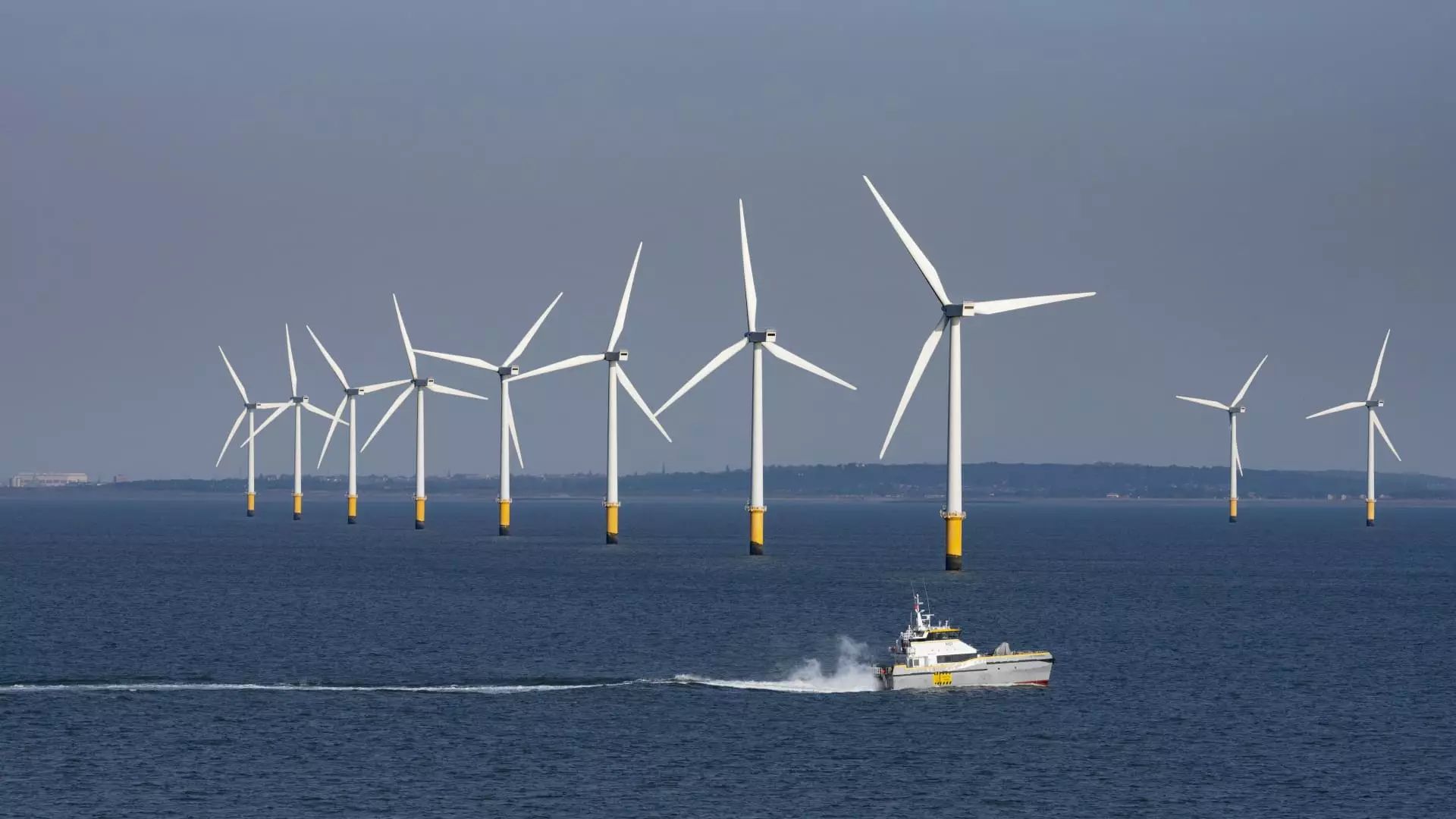Recent developments in U.S. energy policy have created a whirlwind of hope and apprehension, especially for European renewable companies striving to capitalize on the American market’s potential. While some market players greeted the Senate’s adoption of the amended “big beautiful bill” with enthusiasm, this relief is far from a guarantee of sustained growth. The legislation, which aims to inject billions into domestic infrastructure, glaringly underscores a fundamental tension: the uncertain trajectory of U.S. renewable energy policy amidst broader political shifts.
European firms like Vestas, Orsted, and Nordex experienced stock surges, but underlying issues remain. The bill’s modifications included removing a proposed tax on renewable projects that incorporate Chinese components—an issue that had threatened to harm supply chains severely. Yet, the removal of this tax is only a temporary balm; the long-term stability of European firms in the U.S. remains vulnerable to ongoing tariffs, geopolitical tensions, and legislative rollback initiatives. This legislation, fraught with concessions and compromises, reveals an incomplete commitment to renewable growth and signifies a broader battle between protectionist impulses and climate ambitions.
Policy Nuances and Short-Term Optimism Mask Deeper Uncertainties
One of the most significant amendments was the elimination of a “cliff-edge” deadline, which could have crippled many projects by 2028. Now, projects initiated before mid-2026 with at least 5% of capital spent will qualify for tax credits, implying a lively burst of activity in the near term. However, this window is a fragile reprieve. While it potentially incentivizes new projects, it doesn’t resolve the overarching structural and political questions looming over clean energy’s future. Will subsequent administrations uphold or weaken these provisions? Will future policies be more aligned with climate goals, or will pragmatic political considerations continue to dominate?
From a strategic perspective, these legislative changes could usher in a short-term boom, but investors should be wary of complacency. Relying on temporary extensions or legislative loopholes is a risky gamble in an environment where partisan divisions threaten to undo progress at the first sign of political or economic disruption. European firms entering the U.S. market might be tempted to accelerate deployment plans, but they must hedge against mounting uncertainty, knowing that legislative protections could be rescinded or altered with changing administrations.
European Market Stakeholders: Between Opportunity and Vulnerability
The interconnectedness between European renewable giants and the American market is undeniable. Companies like RWE, EDPR, and Iberdrola derive a significant share of their capacity from U.S. assets, which positions the U.S. as a critical growth frontier. Yet, the recent policy developments underscore a fragile relationship. While the U.S. remains a lucrative market, its openness and stability are less assured than prior years, especially given the broader political climate.
This uncertainty’s impact on European developers is twofold. On one hand, the potential to sell power at higher prices or exert downward pressure on manufacturing costs provides a shimmering path for profits. On the other, looming policy reversals and project cancellations threaten to undermine investments. European utilities, with diversified portfolios, can shift CapEx across regions, but smaller players and manufacturers may find themselves caught in the crossfire of US-centric policy upheavals.
The debate over whether U.S. policy shifts signal a step back or a temporary adjustment depends largely on the political winds. If protectionism continues to prevail over climate commitments, Europe’s renewable ambitions might face a squeeze, forcing a reevaluation of deployment strategies. Conversely, a more balanced approach that recognizes renewables’ importance could bring long-term stability, easing some fears but not erasing the risks entirely.
The Broader Political and Economic Context: A Center-Left Perspective
From a centrist liberal stance, the ongoing shifts in U.S. energy policy highlight the difficulty of balancing national interests with global climate responsibilities. While the recent bill affords a sigh of relief, it also exposes vulnerabilities inherent in policymaking driven by short-term political gains rather than a cohesive, forward-looking energy strategy. The rollback of key provisions from the Biden-era Inflation Reduction Act indicates a retreat from the bold vision needed to decarbonize the economy and modernize infrastructure.
This situation underscores the importance of resilient, multi-layered policies that safeguard green investments against political volatility. It should not be an either-or choice between economic protectionism and environmental sustainability; instead, policymakers must realize that climate action and economic security are two sides of the same coin. European renewables, burdened by the legacies of geopolitics and economic nationalism in the U.S., illustrate why international cooperation and stable policy environments are indispensable for achieving genuine progress.
In the absence of consistent policy commitments, the U.S. risks ceding global leadership in renewables to more stable regions in Europe and Asia. For the European sector, this means recalibrating strategies—acknowledging that U.S. ambitions are fragile and that diversification and resilience are essential. The challenge lies in persuading policymakers that a sustainable, inclusive transition benefits not just the environment but also the economy’s long-term health, fostering a healthier, more united approach to climate and energy policy.


Leave a Reply